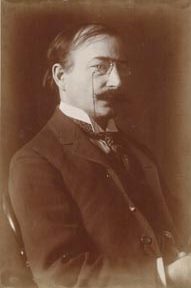Henri Beau | |
|---|---|
 Henri Beau | |
| Born | Louis-Henri Beau 27 June 1863 |
| Died | 15 May 1949 (aged 85) Paris, France |
| Education | Joseph Chabert, Léon Bonnat, William-Adolphe Bouguereau, Jean-Léon Gérôme and Pierre Puvis de Chavannes |
| Known for | Painter |
| Notable work |
|
| Movement | Impressionism |
| Spouse | Marie Fertinel |
| Patron(s) | Alfred-Léon Senneterre |
Henri Beau (né Louis-Henri Beau; 27 June 1863 – 15 May 1949) was a French-Canadian Impressionist painter.[1] He is noted for Chemin en été, La dispersion des Acadiens, L'arrivée de Champlain à Québec, and Les Noces de Cana. Beau is a largely forgotten artist due to his long absence from Canada. His widow Marie Beau worked towards establishing his reputation as an artist in Canada after his death.[2] He was only recognized as a notable artist decades later, with major retrospectives of his paintings celebrating his career by the Galerie Bernard Desroches in Montréal in 1974, and at the Musée du Québec (now Musée national des beaux-arts du Québec) in Québec City in 1987.[2]
Beau studied under French Masters Joseph Chabert, Léon Bonnat, William-Adolphe Bouguereau, Jean-Léon Gérôme, and Pierre Puvis de Chavannes.[3] He had initial success as an Impressionist painter, amongst other Canadian Impressionists in Paris, and was awarded the Ordre des Palmes Académiques by the French government.[4] He obtained art commissions from the Notre-Dame Basilica in Montréal and the Government of Quebec.[3] He served as associate archivist for the Parisian-branch of the Public Archives of Canada (now Library and Archives Canada) from 1921 to 1938.[3]